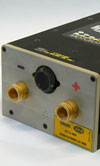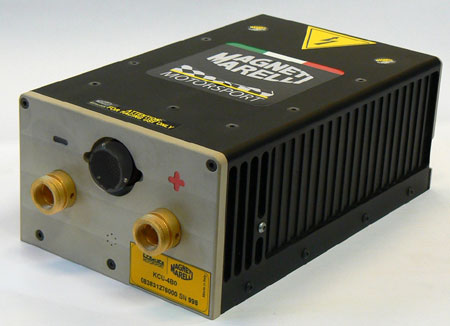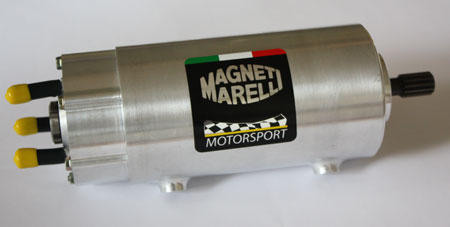Magneti Marelli electrical KERS
 In 2009, and to much fanfare, Formula One ushered in a new technological development that should have improved the racing spectacle and gone some way to placating those environmentalists who see motorsport as the enemy. In both these regards, the introduction of kinetic energy recovery systems (KERS) should have represented an important step forward, but at the end of the year the systems were dropped, and this year nobody is running KERS.
In 2009, and to much fanfare, Formula One ushered in a new technological development that should have improved the racing spectacle and gone some way to placating those environmentalists who see motorsport as the enemy. In both these regards, the introduction of kinetic energy recovery systems (KERS) should have represented an important step forward, but at the end of the year the systems were dropped, and this year nobody is running KERS.
Next year, however, KERS is scheduled to make a comeback. In this article we shall examine some aspects of one of the 2009 systems.
I spoke to Tom Hyder of Magneti Marelli whose system was used in 2009. Asked about the return of KERS in 2011, he says, "Magneti Marelli has proposed its KERS system for 2011. We have continued to develop the system to increase the amount of energy it can handle in each lap, in case the regulations are changed to allow KERS to make a more significant contribution to performance or fuel economy."
The FIA regulations limit both the amount of energy storage and its rate of release, but if Formula One is to improve its green credentials it must be seen as an avenue of free development, rather than a dead end allowing only limited improvements in efficiency. In this case, the increase in available energy storage gives some scope for possible rule changes in this regard.

I asked about the advantages of a purely electrical system compared to a mechanical system, and the main advantage stated was the flexibility in packaging, and owing to the 'modular' nature of the energy storage, adding extra capacity is simple matter. There is no requirement to have all the energy storage in one place, so mass distribution can be easily tailored to suit the needs of the chassis. One major disadvantage was said to be the transport of the batteries and the cars because of the high voltages involved and the precautions that need to be taken to comply with regulations for air freight and so on.
The electric motor-generator unit (MGU) shown in fig. 1 is a liquid-cooled synchronous motor, using permanent magnets. It is geared at a fixed ratio of about 2:1 to the crankshaft speed, and we can therefore expect maximum speeds of about 40,000 rpm for the MGU.
This system will be offered to Formula One teams for 2011, but owing to the need to couple the motor directly to the engine this would require some changes to engines for any teams wishing to take KERS next year.

The company has also developed a mechanical energy storage solution for its KERS motor in conjunction with Flybrid, which has its own purely mechanical system, although this is felt not to be suited to Formula One KERS regulations.
The question was raised about the use of KERS outside of Formula One, and the answer was that "Magneti Marelli has already run a KERS demonstration at Le Mans and the company is very keen to develop systems in all arenas of motorsport without exclusions."
Clearly, the real prize is to develop systems for production vehicles, but motorsport offers both a method for very rapid development of the technology and, of secondary importance, a real possibility that it can increase the appeal of efficient technology beyond those who buy the existing, often unappealingly dull, models currently available.
Fig. 1 - This is the KCU, or KERS control unit, which deals with the many aspects of KERS control and monitoring (Courtesy of Magneti Marelli)
Fig. 2 - Formula One motor-generator unit (MGU) which runs at up to about 40,000rpm (Courtesy of Magneti Marelli)
Written by Wayne Ward